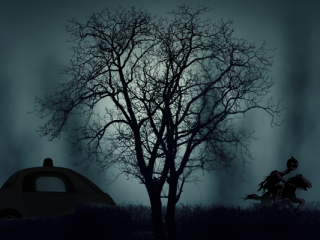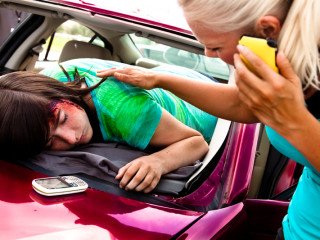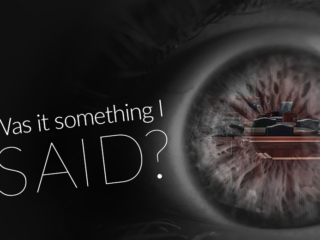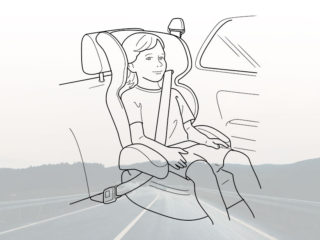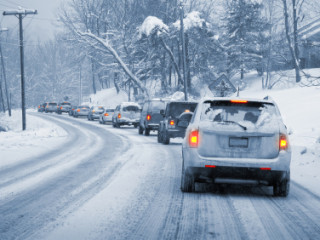It’s that time of year again. The landscape looks so pretty – marshmallow-covered roads, glistening sidewalks, diamond-crusted fir trees, right? The reality is quite different. As personal injury lawyers, at this time of year we are inundated with calls by injured people who have sustained fractures, sprains, concussions and other injuries due to weather-related incidents.
In the case of a car accident, all Ontarians have access to statutory automobile accident benefits, enacted as a regulation to the Insurance Act of Ontario. Accident Benefits provides injured car accident victims with such benefits as income replacement if they cannot work; medical and rehabilitation benefits if they need treatment, medications, and assistive devices; and attendant care benefits if they need a personal support worker, aide, nurse or another form of assistance that is similar. If an auto accident victim is “catastrophically impaired”, the amount of benefits available has a $1 Million cap, which is contained in the Statutory Accident Benefits Schedule (“SABS”). Accident Benefits are also called no-fault benefits – so they are available to anyone, regardless of who is at fault for the accident.
In the case of a slip, trip and fall accident, injured victims do not have instantaneous access to a benefits regime, but they do have the option of commencing a tort claim, or law suit, against the property owner-occupier. The claim would be one for negligence under the Occupiers’ Liability Act of Ontario. In the tort claim, the injured victim can claim compensation for pain and suffering, lost income, and out of pocket expenses including non-OHIP funded health care expenses.
What happens when a slip, trip and fall occurs in the context of an individual exiting or entering their car, traversing a parking lot or getting off a bus? Is the person considered to have had a car accident, such that they can access Accident Benefits right away? Or do they have to hire a lawyer and start a lawsuit against the owner-occupier for failing to keep the surface of the parking lot or driveway (as the case may be) safe?
This “hybrid” scenario has in fact been adjudicated. At first instance, the hybrid accident certainly does seem like a car accident, since it involves an automobile!
The SABS state that an individual is entitled to auto accident benefits if they have sustained injuries in an automobile accident. An automobile accident has been defined in the SABS as an incident where the “use and operation of an automobile directly caused an impairment.”
In a case that was recently adjudicated before the License Appeal Tribunal, a man, “B.Y.” fell on black ice while exiting his car in a parking lot. He parked his car, shut off the engine and stepped out. The evidence was not clear as to whether he still had his handle on the door or not. As soon as he stepped away from the car, his feet flew out from under him on the black ice. 1 He applied to TD Meloche Monnex for auto Accident Benefits.
The Tribunal had no problem concluding that the process of parking and exiting a car was an “ordinary and well-known activity to which vehicles are put.” This is called the “purpose test”. In this sense, the incident was an automobile accident.
However, that was not the end of the analysis. The Tribunal still had to determine if the automobile accident was the direct cause of B.Y.’s injuries. In other words, the Tribunal had to apply a “causation test”. The Tribunal found that yes, the use and operation of an automobile (i.e. parking the car) was a cause of B.Y.’s injuries, but, the black ice constituted an “intervening cause” that broke the chain of causation from the automobile to the injury.
As such, this man did not have access to Accident Benefits after his accident.
Other hybrid scenarios have been found to be excluded from the Accident Benefits scheme. For example,
(a) Exiting a vehicle on an icy roadway, and holding onto the bumper to steady oneself while falling;2
(b) Exiting a vehicle, taking a few steps away, and then tripping in a pothole;
(c) Walking toward one’s vehicle in a parking lot, after being away for a few hours, and tripping in a pothole before reaching the vehicle.3
Hybrid scenarios where individuals have successfully applied for Accident Benefits include:
(a) Disembarking a bus on an unlit portion of roadway (rather than a bus stop) and tripping on a raised bump of asphalt; 4
(b) Running on a street, onto a lawn, stumbling over rocks and falling head-first into a parked vehicle;5
(c) Car-surfing by standing on the bumper of a vehicle and holding onto the roof rack, then falling off when the driver makes a sharp turn;6
(d) An intoxicated person tripping over a parked motorcycle in a campground. 7
In the latter three examples, the applicants were successful because they had contact with a vehicle during the course of the injury. In the first example, the Tribunal found that the bus driver’s decision to stop the bus in an unlit location was a direct cause of the passenger’s injuries – hence the accident was directly caused by the bus (i.e. an automobile).
Bottom line: in the winter months, in all likelihood, if you slip and fall on the surface of an unsalted icy or snowy driveway or parking lot while exiting or entering your car, you will be denied Accident Benefits. If this happens to you and you sustain injuries, you should make note of your surroundings and advise the property owner (or landlord or property manager) in writing that you have been injured and obtain legal advice.
It goes without saying that you have a duty to take reasonable care for your own safety. Always remember to examine your surroundings and walk carefully. Some people find purchasing spikes that they can clip onto the bottom of their boots gives them a degree of safety during the winter months. If you own a driveway and are expecting guests or other invitees, always remember to salt and sand your driveway and walkway during the winter months.
- B.Y. and TD Meloche Monnex
- Webb v Lombard General Insurance 6606 CarswellOnt 2007
- K.B and Intact Insurance
- Mariano and TTC Insurance Company Limited (FSCO A05-002112)
- D.S. and TD Insurance Meloche Monex, 2017
- I.S. and Intact Insurance Company, 2017
- Economical Mutual v Patrick Caughey

